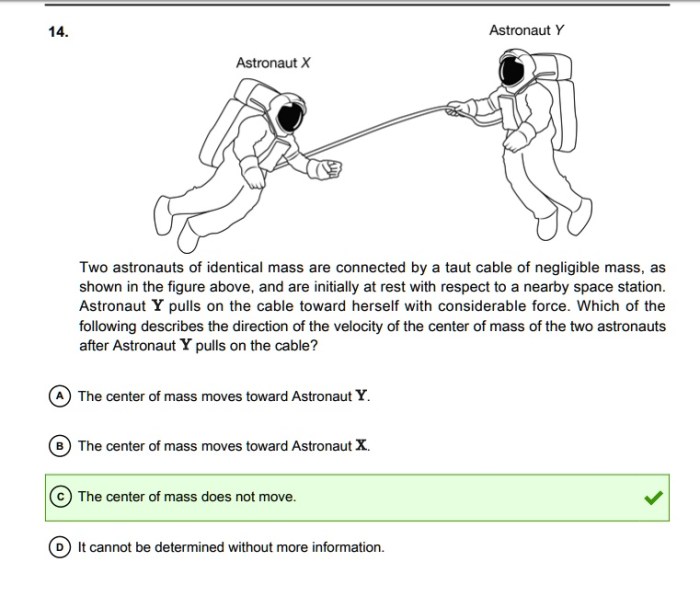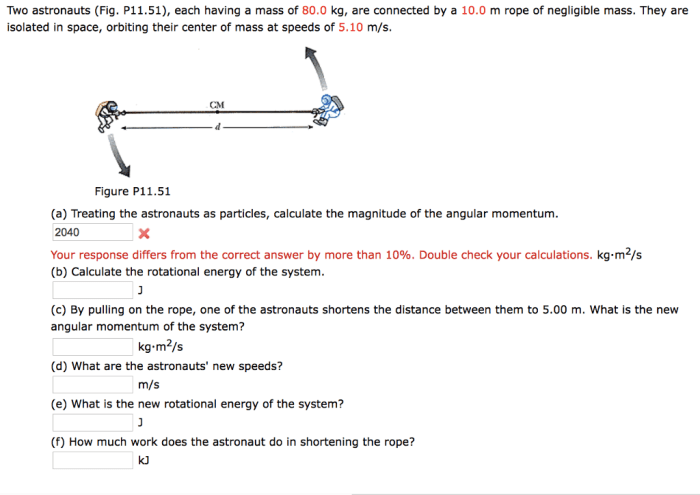Two astronauts are connected by a taut cable – In the unfathomable expanse of space, where gravity yields to weightlessness and the boundaries of human endurance are tested, two astronauts find themselves connected by a taut cable, embarking on a mission that demands unwavering coordination and unwavering trust. Their lifeline serves not only as a physical tether but also as a conduit for communication, a symbol of their shared purpose, and a testament to the indomitable spirit of exploration.
This captivating narrative delves into the intricate dynamics of cable tension, the challenges of communication and coordination in the unforgiving void, the equipment and safety measures that safeguard their lives, the rigorous training that prepares them for the extraordinary, and the myriad applications and benefits that make cable-based technologies indispensable in space exploration.
1. Cable Tension and Astronaut Dynamics: Two Astronauts Are Connected By A Taut Cable

When astronauts are connected by a taut cable, the tension in the cable exerts forces on both the astronauts and the cable itself. The tension force acts along the length of the cable, pulling the astronauts towards each other. This tension affects the astronauts’ motion by altering their velocity and trajectory.
By manipulating the tension in the cable, astronauts can control their movement and maneuver in space.
Astronaut Dynamics, Two astronauts are connected by a taut cable
The tension in the cable creates a centripetal force that acts towards the center of the astronauts’ circular motion. This force causes the astronauts to move in a circular path around each other. The magnitude of the centripetal force is directly proportional to the tension in the cable and inversely proportional to the radius of the circular path.
In addition to the centripetal force, the tension in the cable also creates a tangential force that acts along the tangent of the circular path. This force causes the astronauts to accelerate or decelerate along the path. The magnitude of the tangential force is directly proportional to the rate of change of tension in the cable.
Cable Tension
The tension in the cable is determined by the forces acting on it. These forces include the gravitational force between the astronauts, the centrifugal force due to their circular motion, and the tension force exerted by the astronauts. The tension in the cable must be sufficient to counteract the gravitational and centrifugal forces in order to keep the astronauts connected.
The astronauts can adjust the tension in the cable by pulling or releasing it. By doing so, they can control their motion and maneuver in space. For example, by increasing the tension in the cable, the astronauts can move closer to each other.
By decreasing the tension, they can move further apart.
Popular Questions
What is the primary purpose of the cable connecting the astronauts?
The cable serves multiple purposes: it provides a physical tether for safety, facilitates communication, and enables controlled movement and maneuvering in the zero-gravity environment.
How do the astronauts communicate while connected by the cable?
Astronauts use a combination of voice communication through headsets and hand signals to convey information and coordinate their actions.
What safety measures are in place to prevent accidents?
Rigorous safety protocols are implemented, including the use of redundant cables, emergency release mechanisms, and comprehensive training to mitigate risks and ensure the well-being of the astronauts.

